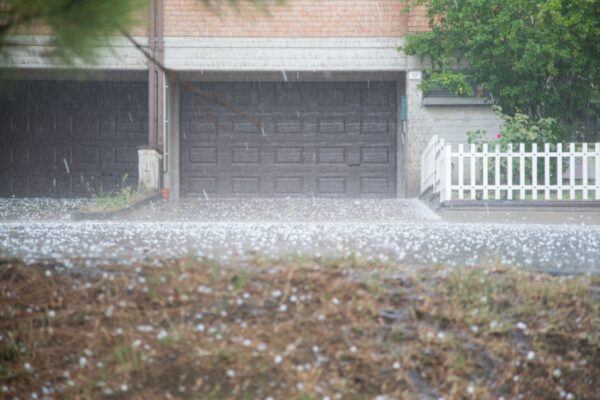By Tony Hopkins, CPCU, The Horton Group and Phillip N. Coover, Attorney, Schenk, Annes, Tepper, Campbell, Ltd.
In this post-downturn market, most property owners and brokers are focusing simply on procuring good tenants to fill empty commercial spaces—which is understandable. But once the property owner has procured the tenant and the business terms are agreed upon, owners have a real opportunity to maximize the value of the business relationship with the rest of the lease document.
Most of the insurance terms, default provisions, subrogation, and other provisions are carelessly plugged into a form lease with boilerplate language. Typical boilerplate provisions are not always advantageous to property owners and sometimes do not make sense in context with existing insurance policies for the property. Even lengthy, well thought out provisions, crafted by real estate professionals, could substantially benefit from a forthright discussion and evaluation with their insurance professional and experienced counsel.
Once the deal is agreed to in principal, usually with an executed letter of intent (LOI), the tenant will then invite the landlord to produce a proposed lease for the tenant’s review. This is the property owner’s opportunity to maximize value. The terms beyond price and lease term are proposed by the landlord, and most are tenant approved without much haggling.
As with any contract, a lease is a negotiation, with a lot of grey area in between the black and white. Knowing what to look and ask for is one thing; actually getting it can be another. Protect yourself as much as possible, without killing the deal.
Tenant Liability Insurance
Require your tenant to maintain appropriate insurance to cover losses. It sounds simple. It is. And it is mutually beneficial. However, as to the extent of coverage, each
situation is different and should be considered to protect both parties in the relationship. An insurance professional can help property owners’ ascertain an adequate amount of coverage based on the on the tenant’s size and business purpose.
It is generally recommended that commercial tenants maintain:
- At minimum, $1M of General Liability coverage for each occurrence, including premises liability
- Tenants are required to carry an Umbrella Liability policy for an additional $1M in coverage, which provides excess protection over the General Liability policy Tenant’s insurance carrier(s) should also meet minimum financial rating standards:
- Most common rating agency for insurance carriers is AM Best
- Carrier must have a rating of A- or better
- Policyholder surplus of V ($10-25M in reserve funds) or better
Check with your insurance agent to make sure the tenant’s coverage is acceptable and that the actual policy obtained meets the lease requirements.
Additional Insured Status
It is beneficial for the property owner to be named as an “additional insured” on the tenant’s General Liability policy. In the event of a slip and fall incident within a tenant’s place of business, generally all involved parties, especially the property owner, will be named in the lawsuit. Even though there are defenses for a property owner since it lacks control of the premises while the tenant is in possession, obtaining additional insured status on a tenant’s policy will give the property owner access to the tenant’s policy for defense and settlement payments.
To activate additional insured status, most policies require a written contract (i.e. lease) stating that the property owner is to be named as an additional insured. The lease needs to specifically state, in writing, that the landlord is to be an additional insured under the tenant’s general liability policy.
Tenant Certificate of Insurance
A property owner should make sure the lease contains a requirement that the tenant provide a certificate of insurance (proof of insurance), including wording for all special endorsements. The certificate should indicate all lines of coverage (i.e. General Liability), limits (i.e. $1M), insurance carrier (i.e. A- and V or better), special endorsements (i.e. additional insured, waiver of subrogation) and the property owner’s name with address. Copies of these certificates should be obtained every year. For a sample certificate of insurance, please email Tony Hopkins.
Property Insurance
The lease should specify who is responsible for maintaining property coverage on the building. Practices in this area vary widely and all are dependent on the parties’ agreement for the contract. One of the most commonly missed aspects of a lease is defining which party is responsible for the Property Insurance deductible. Some policies contain very high deductibles, making this point even more important to be expressly stated in the lease.
Other items addressed in the lease should be tenant’s personal property (i.e. furniture, fixtures, and equipment—“FF&E”), tenant’s business income and tenant’s improvements and betterments. All of these items should be insured on a tenant’s property insurance policy with specific mention that the tenants are expressly responsible for their own property loss.
There are three common practices for handling property insurance costs, and other pass through charges such as common area maintenance and real estate taxes, with tenants:
- Estimating Costs: The owner estimates the cost of insurance and other pass-through charges and the estimated cost is incorporated as a specific rental charge in the lease.
- Passing Along Actual Cost: Once the insurance value is determined by an insurance carrier, the tenant is required to pay upon invoice. Typically, a property owner will charge the tenant an estimated amount for the pass through charges on a monthly basis, which can be included as part of the common area maintenance charges (CAM), and the property owner can reconcile the actual cost against the estimated monthly charges and invoice (or credit) the tenant for the differential at the end of the year (i.e. a “year-end reconciliation” or “true-up”).
- Requiring Tenant to Purchase Insurance Directly: This might remove a small administrative burden, but is not recommended. It is more difficult to monitor the adequacy of coverage when the tenant purchases the insurance. If coverage is not adequate, the property owner’s building could be severely exposed.
Default Provisions
All leases should contain provisions describing exactly when a tenant is in default of the lease. Some boilerplate provisions place a burden on the property owner to serve notices and provide a waiting period to cure the default (i.e. cure period). For monetary defaults (i.e. the failure to pay rent), the lease can simply state that the tenant is in default simply by failing to pay the rent and additional rent and charges on the date due (usually, the first of the month). There is no need to create an additional burden for the property owner to serve a lease default notice and wait a certain period of time, unless the tenant demands such a provision. Additionally, most states require a default notice to be served under applicable statute (as is the case in Illinois), so the landlord will already have an obligation to serve a written default notice without the need for an additional default notice pursuant to the lease.
If a property owner can eliminate additional notice and waiting periods, this will expedite the commercial eviction process for non-paying tenants, which in turn means the property owner can regain possession of the space more quickly, and procure a paying tenant as fast as possible. Any property owner who has had non-paying tenants understands that the speed of regaining possession legally is crucial to the property’s overall revenue stream.
Legal Fees and Costs
A property owner will want to be able to recover their legal fees and court costs in the event they must retain counsel to enforce the lease. However, most boilerplate language provides that the “prevailing party” in litigation has the right to recover legal fees. Instead, try adding a simple position that only requires a tenant to pay the landlord’s costs, such as:
“Tenant must pay all of Landlord’s attorney’s fees and court costs incurred to enforce the provisions of this lease.”
If the tenant pushes back on this provision, a “prevailing party” provision is fairly standard.
Mutual Waiver of Subrogation
This is a big issue in the industry today. A property owner will usually want the tenant to indemnify and hold landlord harmless for any and all damage to the property caused by Tenant’s use and occupancy of the premises, except for claims caused by the property owner’s negligence. However, some property owner’s may want mutual hold harmless and waiver of subrogation provisions—where each party agrees that they will not hold the other liable in the event of a claim and the insurance carrier cannot pursue the negligent party causing the loss, effectively shifting the cost of all potential losses to the insurance carrier (and, in effect, completely relying on the insurance carrier to make the parties’ whole). There are business reasons for each option. The parties should have a clear understanding of their agreement on these provisions, and the parties’ insurance carrier and attorneys should be made aware of their agreement, in order to ensure that the lease, and existing policies, effectuate the parties’ intent.
Below is an example of mutual Waiver of Subrogation:
Example: The owner of a strip mall procured a restaurant tenant. The lease contained a mutual hold harmless wording, and a mutual waiver of subrogation. One evening, a restaurant worker swept underneath the soft drink dispenser and accidently jarred the tube that drains the water from melted ice. For months, the water tube released onto the kitchen floor and into the adjacent wall, causing mold to grow behind the machine. The property owner’s contractors determined that the restaurant, as well as the adjacent mortgage company, were uninhabitable and needed to be temporarily shut down for remediation.
The mold remediation took three days and cost the property owner more than $70,000. He, in turn, had no recourse against the tenant, although the tenant was 100% at fault, because the lease provision agreed to hold the tenant harmless and waived the property owner’s insurance carrier’s right of subrogation against the tenant. The property owner must now look to his insurance carrier for coverage on this damage, which could substantially increase premiums going forward.
The property owner could have avoided paying for the damage its tenant caused, or needing to look to its insurance carrier for coverage, by securing a lease that required the tenant to indemnify the landlord for its actions (or the actions of its agents and third party invitees).
In this example, the negligent party, the Tenant, bears no financial responsibility for the loss.
If the tenant requests a waiver of subrogation, the property owner would typically request that the property insurance cost be passed through to the tenant. In that scenario, the tenant is essentially agreeing to pay for the increased insurance premiums, and shift the risk of loss to the insurance carrier, since a financial loss similar to the situation described in the Example could spell financial disaster for the tenant restaurant. This can be a popular arrangement between property owners and tenants.
Also, if the lease requires an insurance policy to waive subrogation, be sure to have the party waiving subrogation confirm with their insurance carrier that is acceptable and part of the policy. Most insurance carriers will charge an additional premium, or may not even allow such a waiver.
The lease language can drastically shift financial burdens and should be considered carefully. There are reasons to construct indemnification and subrogation clauses either way. They should be carefully considered and communicated to your attorney and insurance provider to insure that the documents reflect the parties’ intentions.
Waiver of Subrogation
The property manager should also require the tenant to provide a waiver of subrogation on the tenant’s general liability policy, in favor of the property manager. The waiver of subrogation removes the tenant’s right of recovery against a property manager. After a loss, the insurance company cannot sue the property manager after an unfavorable ruling or settlement.
Indemnification and Hold Harmless
A property owner should ask for an indemnification agreement in the property owner’s favor (i.e. ABC Renter agrees to indemnify XYZ Property Manager for any liabilities incurred with respect to ABC Renter’s operations). An indemnification agreement is a contract under which one party agrees to reimburse a second party for losses that the indemnitee (ABC Renter) has already paid.
A hold harmless agreement is a contract under which one party agrees to pay specified types and amounts of losses on behalf of a second party. A hold harmless agreement must be in place for additional insured status to be activated.
An indemnification agreement and a hold harmless agreement can generally be incorporated as separate provisions within a lease.
Conclusion
The terms of a commercial lease contain numerous opportunities to reduce risk of loss and maximize the value of the business relationship. A property owner should evaluate these provisions and discuss them with their attorney and insurance provider to make sure the lease is crafted to their benefit.
Material posted on this website is for informational purposes only and does not constitute a legal opinion or medical advice. Contact your legal representative or medical professional for information specific to your legal or medical needs.



